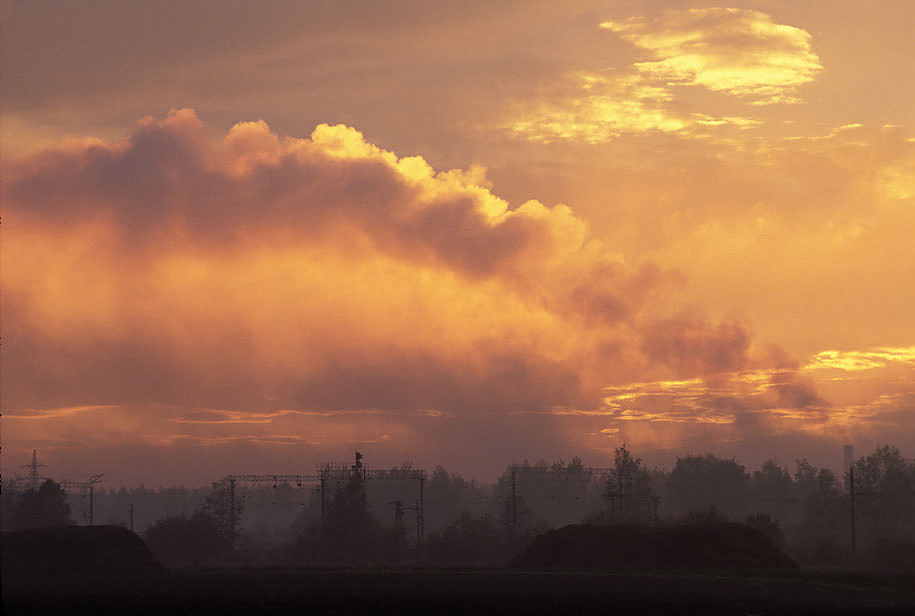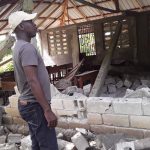On October 8th, 2021, breaking news that the United Nations Human Rights Council had declared a “safe, clean, healthy and sustainable environment” as a human right made headlines. At least two aspects of the declaration are worth exploring and clarifying in the aftermath of the 26th United Nations Conference on Climate Change, also known as COP26, held in Glasgow from October 31st to November 13th. The first is the enormity of the environmental issue prompting the declaration. The second is the legal status and/or political value of such declarations. The Council issued the declaration—now what? Is it binding on all the states of the world, including the United States?
From the perspective of environmental urgency, this declaration is a huge deal. It puts an official spotlight on a critical air quality situation. At present, more than 95 percent of the world’s population does not have safe air to breathe. The documented impact of unsafe air on human health ranges from chronic asthma to neurological problems and shortened lifespan. One would hope that this declaration is a precursor of others to come, given the fact that air pollutants are only a few among the vast complex of pollution streams affecting humans every day. The air quality statistics are grim, and they should galvanize us to address other statistics about the threats of increasing pollution in our lives.
Climate change and human health
Annually 24 million people across the globe are displaced owing to environmental stressors. To put that in perspective, about 7 million are displaced by armed conflict. By 2050, a projected minimum of 1 billion people will be displaced in response to growing environmental challenges. As a result of displacement and environmental changes, an estimated 3 billion people could face food insecurity by 2050. This is an increase of 1.5 billion people compared with today’s numbers, as global food demand is expected to increase by 50 percent between now and then. And, to add insult to injury, the majority of the people at the highest risk of displacement due to climate change contribute very little to the emissions processes known to be driving climate change, namely the spending and lifestyle habits of other, usually wealthier countries and people.
A significant driver of climate change is recent rampant human-produced greenhouse gas emissions accumulating in Earth’s atmosphere and altering its makeup (a form of pollution known as non-toxic). However, it is important to remember that there are other, more insidious pollution streams directly attacking the human body today. For example, recent research indicates that roughly 10 million people die every year from the particulate matter—tiny dust and droplets under 2.5 microns in size that enter the lungs and act like sand therein—released from burning fossil fuels. And this does not account for the effects of sulfur oxides, nitrogen oxides, and other hazardous air pollutants that are always co-emitted with particulate matter in fossil fuel emissions. Nor does it begin to touch on the well-documented, dangerous effects of heavy metals, “forever chemicals,” and other substances that find their way into drinking water and soil from myriad sources, including industrial farming, factory emissions and vehicle emissions.
Compounding the issue of growing toxic exposures due to climate change is the global rural to urban migration, which puts more bodies into proximity with pollution. In 1950, 30 percent of the world’s population lived in urban areas. Today more than half the world’s population, over 4 billion people, live in cities, and by 2050 an estimated 70 percent will be in urban environs. Urban living concentrates pollution emissions sources, resulting in everything from higher rates of childhood asthma to a higher likelihood of dying from COVID-19 or the protagonist of some future pandemic.
The role of declarations
Can statements such as the new human rights declaration help to address these immense challenges? What are the actual, or likely, implications of such a statement? What functional changes can it set in motion?
The mere declaration of a human right by an international institution, even an extremely authoritative one like the UNHRC, does not in itself establish a new human right at the international level. International obligations can come about in two ways: from a direct commitment of sovereign states (through treaties, agreements, covenants, etc.), or through the gradual elevation of an accepted state practice into customary international law. That is, a country that acts for years as if it has an obligation, may then be said to actually have that obligation, even in the absence of an explicit agreement. Neither the UNHRC nor the UN General Assembly possesses the authority to “create” a new human right. When an institution such as the UNHRC discusses, votes upon, and approves a resolution, it remains in the form of a political statement. It may be a sign of broad consensus, but it is not immediately applicable in the way that, for example, a statute passed by a legislature would be. It is not automatically a right that can be claimed in any court of law.
The real value of the declaration? It is the beginning of a process.
Given the fraught history of the US administration and international institutions regarding the environment, a reader might conclude that such a declaration is useless. This might be true, if we assume that “rights” are meaningful only when they create the possibility to litigate in courts. However, the Declaration is not meaningless. In the past, several important principles have been introduced through the language of rights, especially at the international level. Consider the Universal Declaration of Human Rights, a powerful but non-binding instrument approved in 1948, which has gone on to inspire several international, binding, agreements on human rights, not to mention the hearts and minds of millions of activists around the world.
The real value of the Declaration? It is the beginning of a process, rather than its conclusion, in which governments, state officials, courts and activists, can find inspiration and a common lexicon. Over time, bit by bit, policies and treaties (which do contain legal obligations) will eventually be put in place, and will likely build on the declaration, explicitly or implicitly. This is the actual value of declaring such a right. Recent progress in environmental law has happened through the adoption of first acts of non-binding, so-called “soft law,” progressively stiffened into binding rules.
The declaration is another expression of the consensus that the time to act is now.
COP26 concluded in controversy, not least owing to dissatisfaction with the lack of concrete action plans emerging from the deliberations and the continued lack of alignment between both political rhetoric and voluntary emissions reductions plans with enacted national policies. Post-COP26, the gap between stated commitments (called Nationally Determined Contributions) and realized implementation leaves the trajectory of global warming at 2.4 degrees Celsius above the pre-Industrial average while the alleged target ceiling is 1.5 degrees Celsius of warming—we are still substantially off course. Action follows consensus, however, and the world seems to be moving towards a consensus that the time to act dramatically is now. The UNHRC Declaration is, at least, another expression of that consensus. Now we shall see whether the declared right to a safe and clean environment leads to more aggressive state practices and, eventually, to customary international law. One hopes.
Richard Marcantonio is a postdoctoral teaching scholar at the Kroc Institute for International Peace Studies in the Keough School of Global Affairs at the University of Notre Dame.
Luigi Crema is assistant professor of international law in the Law School of the University degli Studi of Milan. He also is a visiting faculty member at the University of Notre Dame.
Mariangela Sullivan is a practicing attorney, principal at Castletown Translations and an official translator for the Supreme Court of Italy.
This article is part of a series of blog posts published by the Keough School of Global Affairs. Dignity and Development provides in-depth analysis of global challenges through the lens of integral human development.
Photo: “Smokestacks against skyline” by World Bank Photo Collection is licensed under CC BY-NC-ND 2.0.



